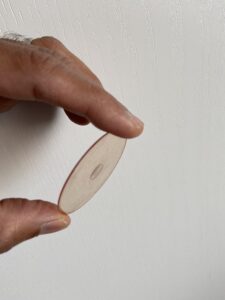 One of the biggest complaints with cellphones today is the ugly camera lens bump that protrudes from the back of the phone. It may be unsightly, yet with today’s technology involving curved lenses it’s a necessary evil in order to zoom in on a subject and still produce sharp pictures.
One of the biggest complaints with cellphones today is the ugly camera lens bump that protrudes from the back of the phone. It may be unsightly, yet with today’s technology involving curved lenses it’s a necessary evil in order to zoom in on a subject and still produce sharp pictures.
But a team of researchers led by University of Utah electrical and computer engineering associate professor Rajesh Menon is designing a flat lens for smartphones and other applications that is lighter and a thousand times thinner than a regular lenses while still maintaining tremendous depth of field. Their research into flat lenses was just picked as one of the top technologies in the field of optics for 2020 by Optics and Photonics News, the optical society’s premier magazine.
 “It is very humbling to be selected by the Optical Society of America as one of the top Optics technologies in 2020, and I completely attribute this to the creativity and perseverance of our team including Dr. Apratim Majumder, Monjurul Meem and Dr. Sourangsu Banerji,” Menon said. “This recognition is an important honor for fundamental and applied research being done at the University of Utah and a testament to the expertise and infrastructure available at the Utah Nanofab.”
“It is very humbling to be selected by the Optical Society of America as one of the top Optics technologies in 2020, and I completely attribute this to the creativity and perseverance of our team including Dr. Apratim Majumder, Monjurul Meem and Dr. Sourangsu Banerji,” Menon said. “This recognition is an important honor for fundamental and applied research being done at the University of Utah and a testament to the expertise and infrastructure available at the Utah Nanofab.”
Others involved in the project include University of Utah electrical and computer engineering associate professor Berardi Sensale-Rodriguez and U researchers Majumder, Meem and Banerji.
Traditional camera phones require multiple lenses to create sharp photos, resulting in the “camera bumps” seen on such devices as the iPhone and Samsung Galaxy. But the lenses designed by Menon’s team is only about a thousandth of an inch thick and use nanostructures patterned on a flat surface rather than bulky glass or plastic to achieve the important optical properties that control the way light travels. This new lenses can maintain a focus on objects that are about six meters apart from each other simultaneously. Their research has been documented in several papers published in peer-review journals.
“The new lens eliminates the need for focusing and allows any camera to keep all the objects in focus simultaneously,” said Menon. “Conventional cameras also use multiple lenses to keep different colors of light in focus simultaneously. Since our design is very general, we can also use it to create a single flat lens that focuses all colors of light, drastically simplifying cameras even further.”
Menon added that these lenses could be mass produced using low-cost imprinting techniques and have applications beyond smartphones, including aerospace and airborne imaging as well as augmented and virtual reality displays.